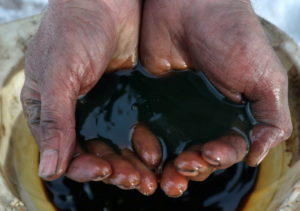On Thursday the prices for Oil moved even higher aided by lower United States inventories as numerous investors decided to wait for key producers to make a decision on whether they would reduce or maintain the supply cuts in the second half for this year; 2021.

Brent Crude for September gained 0.2 percent or 15 cents to 74.77 United States Dollars(8,071.42 Kenyan Shillings) per barrel while the United States West Texas intermediate crude for August gained 0.3 percent or 22 cents to stand at 73.69 United States Dollars (7,954.84 Kenyan Shillings) per barrel.
WTI grew by more than 10 percent in June while Brent added more than 8 percent, making it their highest levels since October 2018 as travelling has continued to pick up despite the still ongoing Coronavirus pandemic.
Analysts had earlier on, stated a forecast of a bigger supply deficit worldwide in the second half of this year; 2021 due to the fact that the Organization of the Petroleum Exporting Countries and their allies, known collectively as OPEC+, continue to maintain production cuts even as demand keeps rising.
In 2020 the Organization of the Petroleum Exporting Countries and their allies (OPEC+) decided to carry out output cuts of around 10 million barrels per day (bpd) starting from May 2020 up until the end of April 2022 when it will then be phased out.

Between May and July it reduced supply cuts by 2.1 million barrels per day (bpd). It is set to meet today; Thursday the 1st of July 2021 to decide whether or not it will be leaving its production decision unchanged or whether it will be boosting output probably by a considerably low figure of 0.5 million barrels per day (bpd) or by as much as 1 million barrels per day (bpd) in August 2021.
It is also expected that the group will discuss whether or not it will be extending the supply reduction deal to farther than April of 2022.
ANZ analysts stated via a note that, “Sideline discussions indicate that Russia is proposing to boost supply while Saudi Arabia wants a more cautious approach.”
Citi Bank analysts believe that the oil market fundamentals should be healthy enough to justify the easing up of production cuts. Said analysts added that they were putting into consideration a 1 million barrels per day (bpd) increase in Organization of the Petroleum Exporting Countries (OPEC) supplies in August.
However even with its accounting for higher production by the Organization of the Petroleum Exporting Countries and their allies (OPEC+) analysts at Citi Bank expect that the market will remain in a deep deficit of more than 3 million barrels per day (bpd) through the third (3rd) quarter with a high probability of Brent hitting an estimate of 85 United States Dollars per barrel.

There are increasing concerns that outbreaks of the Delta variant of the Coronavirus might lead to demand recovery slowing down. Increasing costs along with renewed lockdowns have already begun to have a negative effect on the otherwise growing momentum in factories in Asia this past June.
Last week in the United States for example, stockpiles of crude dropped for the sixth (6th) week in a row. According to data from the Energy Information Administration the development is being seen as a response to an increase in demand.
A reduction in the crude inventories at Cushing, Oklahoma which is the deleivery point for WTI saw a level that was the lowest since March of 2020. It also underpinned the United States Benchmark squeezing its discount to Brent to the closest since September of 2020 on Wednesday the 30th of June 2021.
Brent was seen to be averaging 67.48 United States Dollars (7,284.47 Kenyan Shillings) per barrel this year while WTI stood at 64.54 United States Dollars (6,967.09 Kenyan Shillings) per barrel. According to a poll by Reuters both were higher than the forecasts made in May of this year.
How informative was this article? Are there any other news topics, categories, or How To topics, that you would like us to write on? Feel free to reach out to Mpesa Pay in the comment section.


